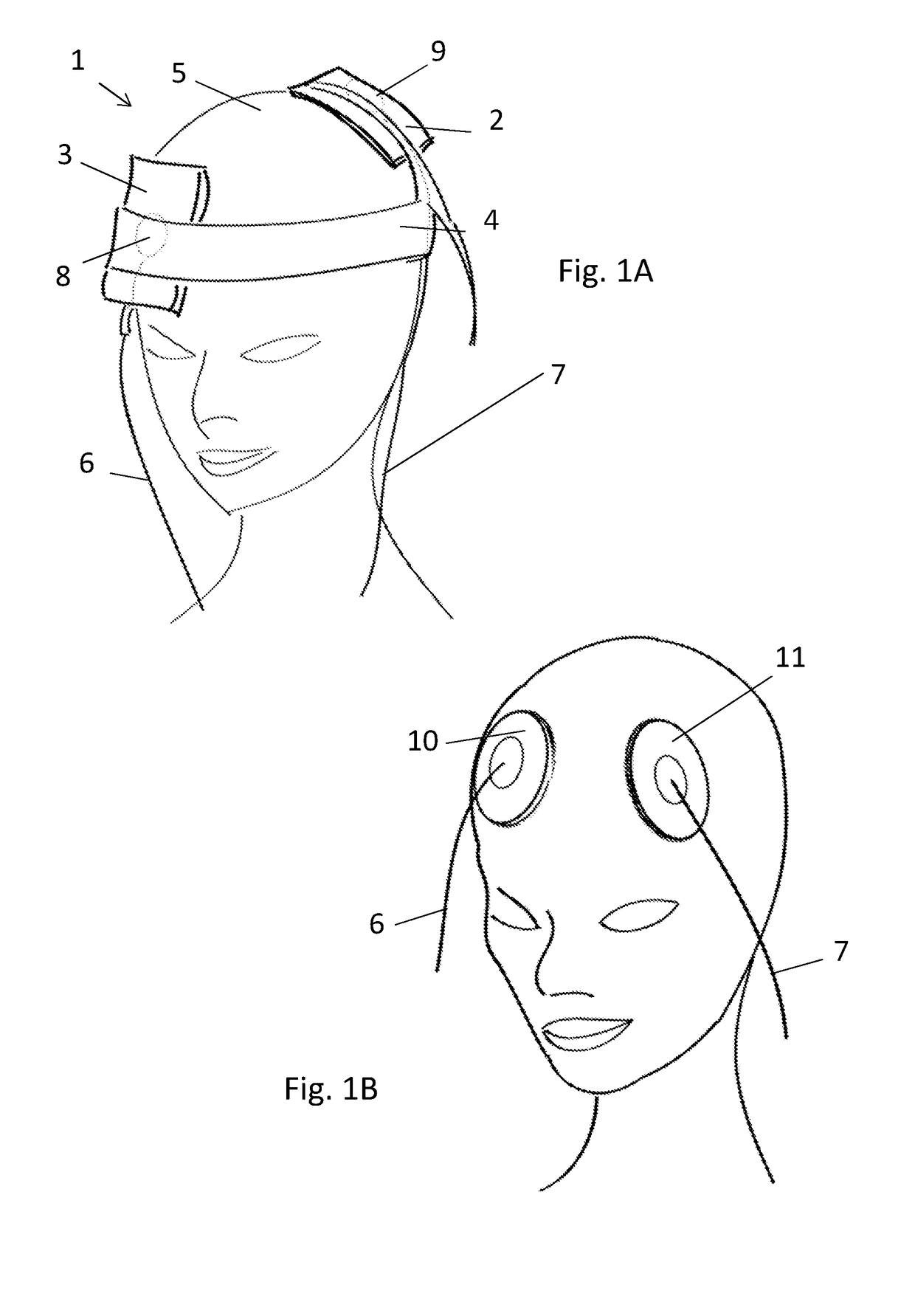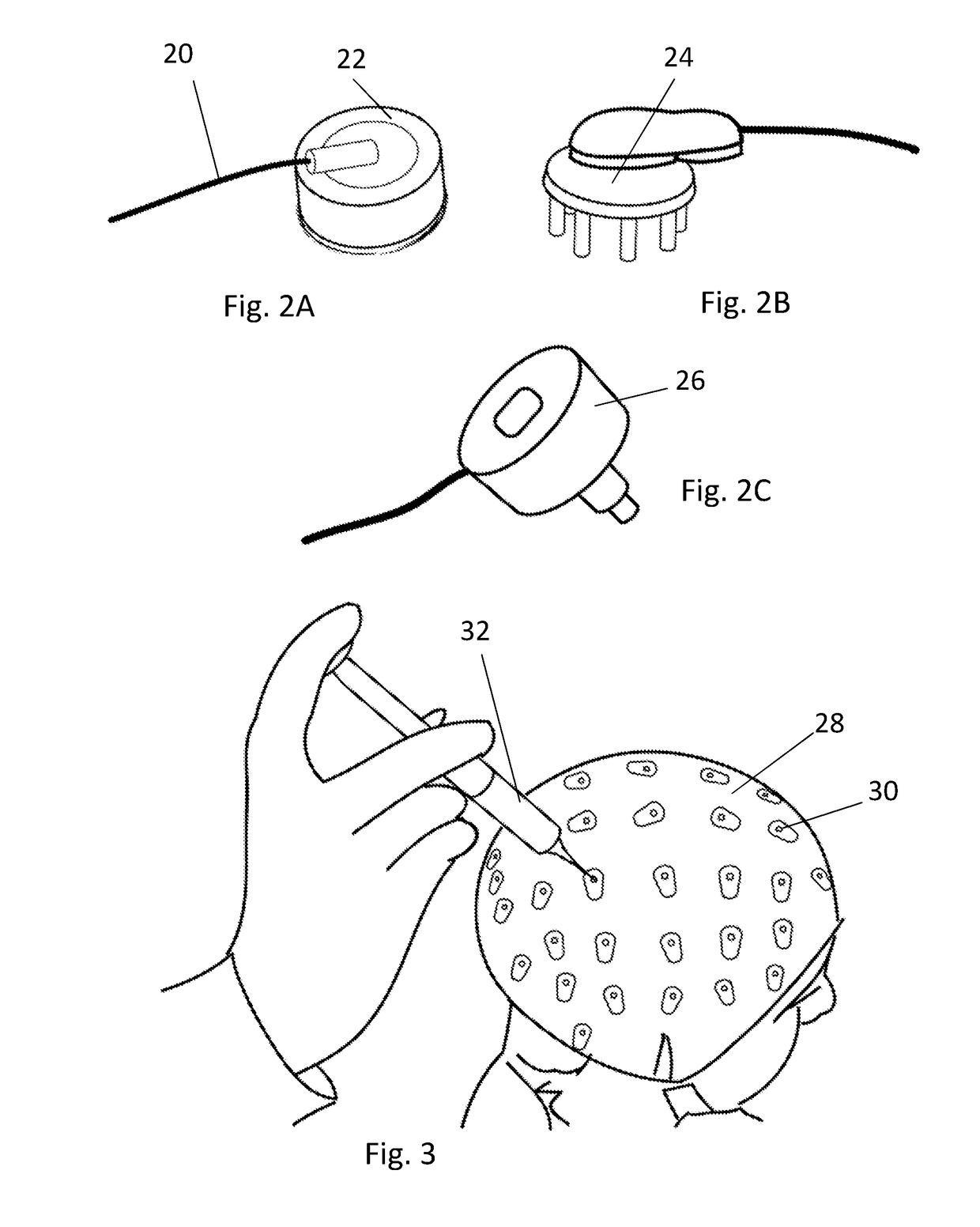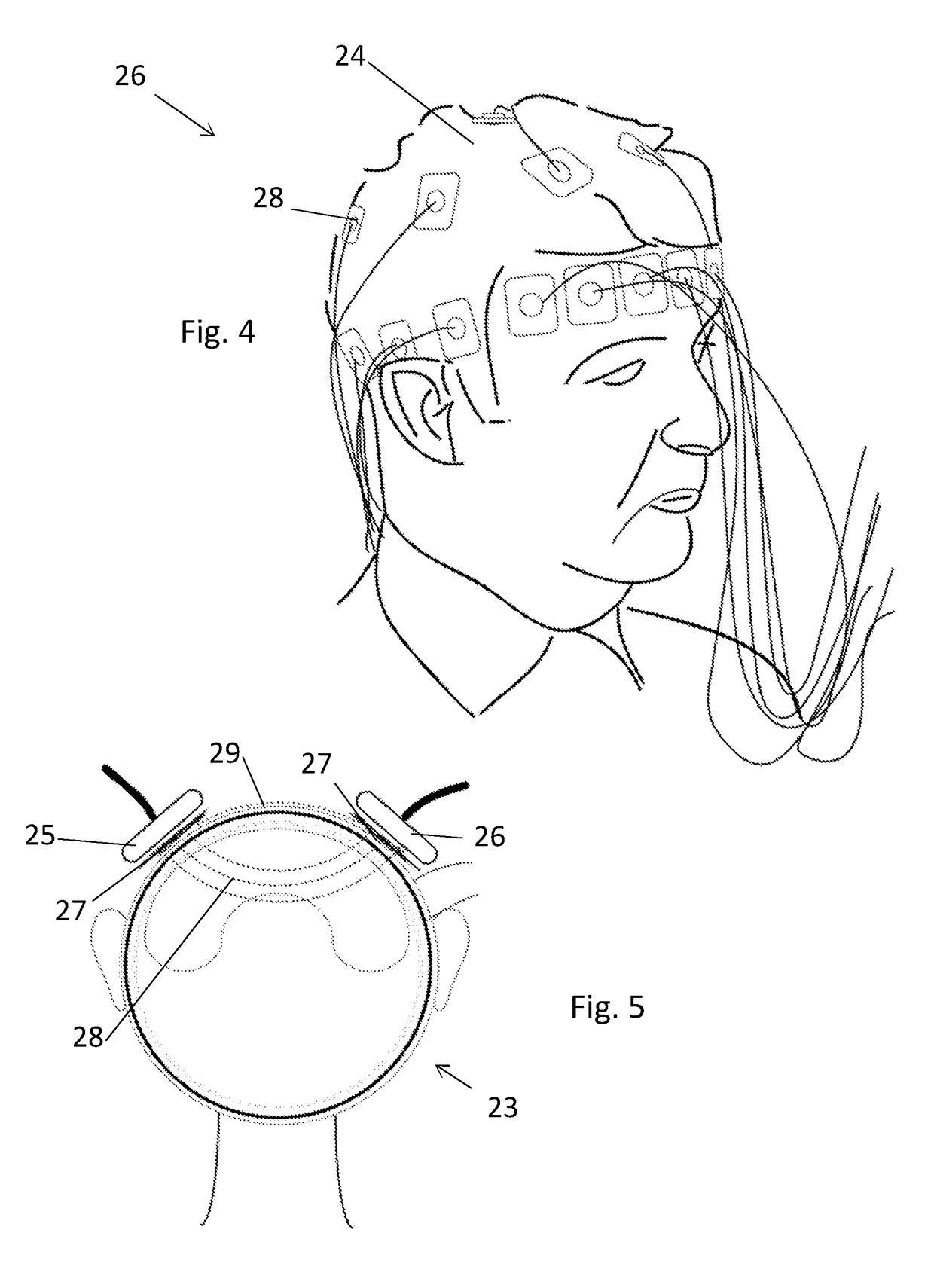Electrode apparatus
a technology of electrodes and electrodes, which is applied in the field of electrode apparatuses, can solve the problems of difficult identification of which part of the electrical path between the electrodes is causing the high impedance, dangerous concentration of current over a small skin area, and a large amount of current, so as to improve the characterisation of the impedance within the head and accurate estimation of the dosage
- Summary
- Abstract
- Description
- Claims
- Application Information
AI Technical Summary
Benefits of technology
Problems solved by technology
Method used
Image
Examples
Embodiment Construction
[0652]FIG. 4 illustrates an application of electrical impedance tomography to determine an image 23 of the head 24 of a subject 26 using a plurality of point electrodes 28 attached to the head 24. Typically, a plurality of 2D images are determined from measurements made using the electrodes 28, and the 2D images are combined for form a ‘real’ 3D geometric brain / head model of the impedance of the head, where the greyscale value represents the reconstructed impedance value from the measured data. FIG. 5 illustrates a simplified conceptual mathematical model 23 of the impedance of the human head for transcranial electrical stimulation, the model 23 comprising several tissue / impedance layers inside the head, two monolithic electrodes 25, 26, electrolyte 27 and electrical current flow 28, 29 through the head and shunted across the scalp.
[0653]FIG. 6A illustrates a transcranial electrical stimulation session of a human subject 40, typically under the control of a clinician 42 (although it...
PUM
| Property | Measurement | Unit |
|---|---|---|
| electrical currents | aaaaa | aaaaa |
| impedance | aaaaa | aaaaa |
| wavelength | aaaaa | aaaaa |
Abstract
Description
Claims
Application Information
 Login to View More
Login to View More - R&D
- Intellectual Property
- Life Sciences
- Materials
- Tech Scout
- Unparalleled Data Quality
- Higher Quality Content
- 60% Fewer Hallucinations
Browse by: Latest US Patents, China's latest patents, Technical Efficacy Thesaurus, Application Domain, Technology Topic, Popular Technical Reports.
© 2025 PatSnap. All rights reserved.Legal|Privacy policy|Modern Slavery Act Transparency Statement|Sitemap|About US| Contact US: help@patsnap.com



